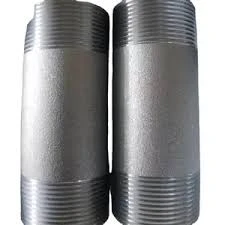-
Cangzhou Yulong Steel Co., Ltd.
-
Phone:
+86 13303177267 -
Email:
admin@ylsteelfittings.com
- English
- Arabic
- Italian
- Spanish
- Portuguese
- German
- kazakh
- Persian
- Greek
- French
- Russian
- Polish
- Thai
- Indonesian
- Vietnamese
- Zulu
- Korean
- Uzbek
- Hindi
- Serbian
- Malay
- Ukrainian
- Gujarati
- Haitian Creole
- hausa
- hawaiian
- Hebrew
- Miao
- Hungarian
- Icelandic
- igbo
- irish
- Japanese
- Javanese
- Kannada
- Khmer
- Rwandese
- Afrikaans
- Albanian
- Amharic
- Armenian
- Azerbaijani
- Basque
- Belarusian
- Bengali
- Bosnian
- Bulgarian
- Catalan
- Cebuano
- China
- China (Taiwan)
- Corsican
- Croatian
- Czech
- Danish
- Esperanto
- Estonian
- Finnish
- Frisian
- Galician
- Georgian
- Kurdish
- Kyrgyz
- Lao
- Latin
- Latvian
- Lithuanian
- Luxembourgish
- Macedonian
- Malgashi
- Malayalam
- Maltese
- Maori
- Marathi
- Mongolian
- Myanmar
- Nepali
- Norwegian
- Norwegian
- Occitan
- Pashto
- Dutch
- Punjabi
- Romanian
- Samoan
- Scottish Gaelic
- Sesotho
- Shona
- Sindhi
- Sinhala
- Slovak
- Slovenian
- Somali
- Sundanese
- Swahili
- Swedish
- Tagalog
- Tajik
- Tamil
- Tatar
- Telugu
- Turkish
- Turkmen
- Urdu
- Uighur
- Welsh
- Bantu
- Yiddish
- Yoruba

Dec . 12, 2024 23:35 Back to list
en 1092 1 flange standard
Understanding the EN 1092-1 Flange Standard A Comprehensive Overview
Flanges are essential components in piping systems, serving as the connection points between various parts of the system. The EN 1092-1 standard, a widely recognized European standard, provides a comprehensive set of specifications for flanges used in various industrial applications. Established by the European Committee for Standardization (CEN), this standard plays a pivotal role in ensuring safety, compatibility, and reliability in piping designs.
Overview of EN 1092-1
EN 1092-1 specifies the technical requirements for circular flanges made of metallic materials designed for use in pipelines and pressure vessels. This standard covers several critical aspects, including the dimensions, tolerances, pressure-temperature ratings, and materials used in flange manufacturing. The primary goal is to ensure that flanges used across various industries maintain consistency and interoperability, which is crucial for system integrity.
Types of Flanges Covered
The EN 1092-1 standard outlines several types of flanges, including
1. Flanges with Raised Faces (RF) Commonly used in piping systems, these flanges have a raised surface that enhances the sealing capability when joined with another flange.
2. Flat Faced Flanges (FF) These flanges have a flat sealing surface and are often used in applications where the flanges will be joined to cast iron or other materials.
3. Ring Type Joint Flanges (RTJ) Featuring a groove on the flange face, these are designed for high-pressure and high-temperature applications, utilizing a metal ring to create a tight seal.
Each type of flange is suitable for different applications, and the choice of which to use depends on system requirements and environmental conditions
.Material Specifications
The EN 1092-1 standard specifies various materials for flange production, including carbon steel, stainless steel, and special alloys. These materials are selected based on their mechanical properties, corrosion resistance, and compatibility with the fluids they will carry. For instance, stainless steel flanges are preferred in corrosive environments due to their excellent resistance to rust and chemical decay.
en 1092 1 flange standard

Pressure-Temperature Ratings
One of the crucial elements of the EN 1092-1 standard is the classification of flanges according to their pressure and temperature ratings. The standard defines several pressure classes, allowing engineers to select a flange that meets the requirements of their specific application. The pressure-temperature ratings guide users on the maximum allowable pressure at varying temperatures, thus ensuring safe operations under potential service conditions.
Manufacturing and Quality Control
Manufacturers producing flanges under the EN 1092-1 standard must adhere to strict quality control measures. This includes verifying dimensions, ensuring correct material specifications, and conducting pressure tests to guarantee the integrity of the flanges. Certified manufacturers provide flanges that meet or exceed international standards, assuring users of their reliability and durability.
Advantages of Using EN 1092-1 Compliant Flanges
Utilizing flanges that comply with the EN 1092-1 standard offers several advantages, including
- Interoperability Flanges manufactured under this standard can be used interchangeably with flanges from different suppliers, enhancing system flexibility. - Enhanced Safety Standardized pressure ratings and material specifications help prevent failures in piping systems, promoting safety in industrial environments.
- Quality Assurance Compliance with EN 1092-1 signifies that the product has undergone rigorous testing and quality checks, providing peace of mind to users.
- Global Recognition EN 1092-1 is recognized internationally, making it a key reference point for engineers and designers working in global markets.
Conclusion
The EN 1092-1 flange standard is a vital aspect of engineering and manufacturing in the field of piping systems. By promoting consistency, safety, and quality, this standard ensures that flanges can perform reliably across various applications. As industries continue to evolve, adherence to such standards will remain essential for maintaining the integrity and efficiency of critical infrastructure. Understanding and implementing the EN 1092-1 standard is crucial for engineers, designers, and manufacturers to ensure that their piping systems operate safely and effectively.
Latest news
-
ANSI 150P SS304 SO FLANGE
NewsFeb.14,2025
-
ASTM A333GR6 STEEL PIPE
NewsJan.20,2025
-
ANSI B16.5 WELDING NECK FLANGE
NewsJan.15,2026
-
ANSI B16.5 SLIP-ON FLANGE
NewsApr.19,2024
-
SABS 1123 FLANGE
NewsJan.15,2025
-
DIN86044 PLATE FLANGE
NewsApr.19,2024
-
DIN2527 BLIND FLANGE
NewsApr.12,2024
-
JIS B2311 Butt-Welding Fittings LR/SR 45°/90° /180°Seamless/Weld
NewsApr.23,2024











